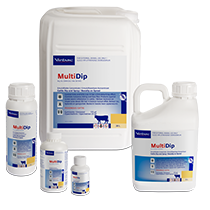
Bont-legged tick (Hyalomma turanicum)
Three of the twenty one Bont-legged tick species occur in South Africa. They are: The large, coarse Bont-legged tick (Hyalomma marginatum rufipes), The pale-legged , Bont-legged tick (Hyalomma marginatum turanicum) and The small smooth Bont-legged tick (Hyalomma truncatum).
Bont-legged ticks are relatively large ticks and they are very active. The adult ticks are well known for their habit of scuttling out to attack humans or animals approaching the entrances of burrows or other shady places where these ticks lie and wait.
The small smooth Bont-legged tick is a medium-sized dark brown tick, with long mouthparts , beady eyes and long banded legs.
Life Cycle:
The Bont-legged tick is a two host tick, which means the larvae and nymph stages occur on the same animal, but the Adult stage attaches to a different host.
The larvae and nymph stages prefer bird species , hares and rodents. The adult stages prefer larger domestic animals like cattle, horses, sheep, goats, some larger wild animals and various antelope species.
The life cycle stretches over a 1 year period.
The female ticks lay between 10 000 to 15 000 eggs. The eggs can take up to 3 months to hatch into larvae, the first active stage. The larval stage attaches to the host , feeds for 5 - 7 days before they moult to the next stage (nymphal stage) takes place. The nymphal stage remains on the same host, they will feed for 5 days. Thereafter they will drop off the host as engorged nymphs to moult into adult ticks. The adults will then attach to their prefered hosts and feed for about 5 - 7 days, drop off and start with egg laying. Tick activity increases late summer.
Attachment site:
The Bont-legged tick is found on the tail brush, and often on the perineum, genitalia and between the hooves.
Disease transmission
The adult ticks that feed on livestock, excretes a toxin that causes sweating sickness, especially in young calves. Due to the long mouthparts the tick bites can cause considerable damage to the skin, bacteria can enter these wounds which result in swellings, abscesses, lameness, footrot and sloughing of teats and tail tips. In some instances these tick bite wounds never heal and attract flies.
In Humans , the Bont-legged tick is responsible for transmitting Congo- and tick bite fever.
Control
Dip animals strategically and frequently to reduce tick challenges. Spot treatment can be used by only spraying tick “attachment site” areas. In peak seasons dipping intervals need to be increased to reduce tick numbers. Always remember to use the 5,5,4 day dipping interval strategy when tick challenges are very high. And with calves , remember to dip the tail brush too. For sheep, foot baths can be used to remove the ticks between and behind the hooves.
Amipor pour-on/ MultiDip can be used to control Bont-legged ticks.


